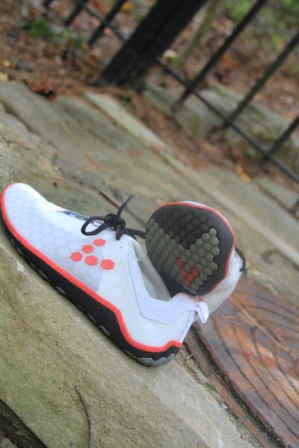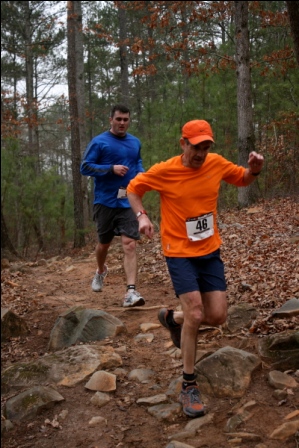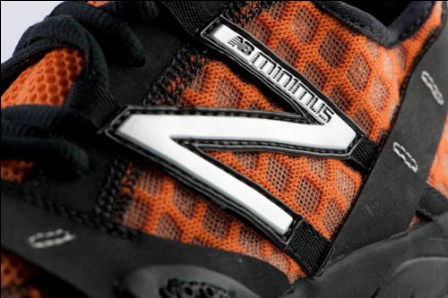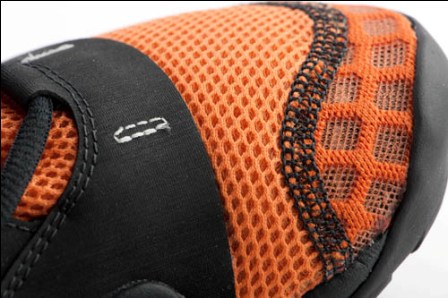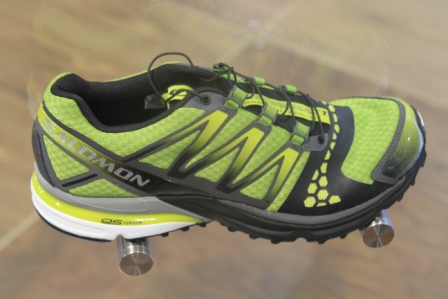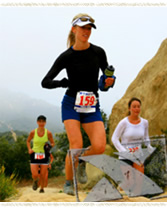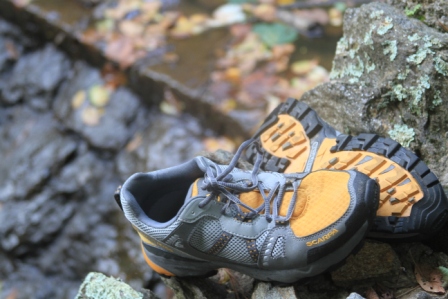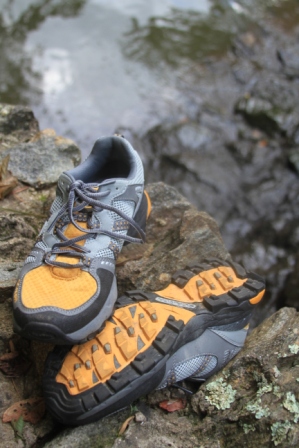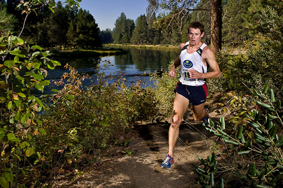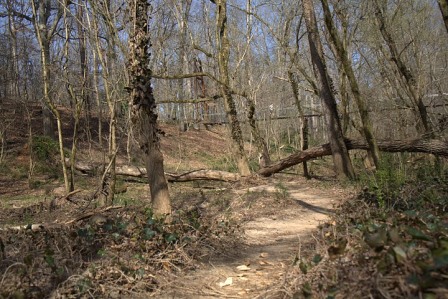 Find a Local Loop: Find a local trail running loop near where you live. Many of us don’t live close to an epic trail run (sucks) and it is difficult to get out to a good trail run during the work week. But don’t fret, you can use SeriousRunning.com’s trail finding tool to find a trail that is close to your home or your place of business, or even home business! Even if your local trail run isn’t the gnarliest around, a trail loop that you can run regularly can be a great barometer for your trail running training. You can race against yourself and see improvement. Running your local trail will also give you consistent practice running over the same terrain, allowing you to improve as you learn through repetition. I suggest reading this article over and over.
Find a Local Loop: Find a local trail running loop near where you live. Many of us don’t live close to an epic trail run (sucks) and it is difficult to get out to a good trail run during the work week. But don’t fret, you can use SeriousRunning.com’s trail finding tool to find a trail that is close to your home or your place of business, or even home business! Even if your local trail run isn’t the gnarliest around, a trail loop that you can run regularly can be a great barometer for your trail running training. You can race against yourself and see improvement. Running your local trail will also give you consistent practice running over the same terrain, allowing you to improve as you learn through repetition. I suggest reading this article over and over.
Run Different Types of Terrain: I know, this is the opposite of what I just said, but so as I say, not as I….um, say. While it is good to practice on the same trail loop to gauge your improvement, trail runners also need to practice running on 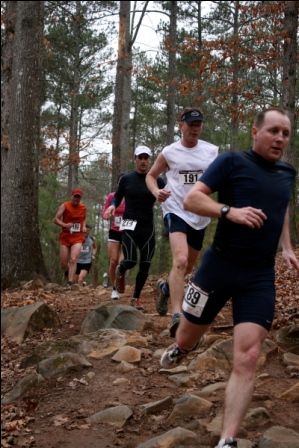 different types of terrain to gain the many trail running skills needed to have a complete trail running repertoire (repertoire is French for “tool belt”). No two trails are alike, so you must be prepared for any obstacle before they come. Or overcome obstacles. Whatever you prefer.
different types of terrain to gain the many trail running skills needed to have a complete trail running repertoire (repertoire is French for “tool belt”). No two trails are alike, so you must be prepared for any obstacle before they come. Or overcome obstacles. Whatever you prefer.
Walk: I never stopped and walked on a run until I started running trails. I didn’t do it because I was tired though, but because of strategy. It is better to take long strides and walk up most steep inclines rather than running up them. Walking uses slightly different muscles than running which will give your running legs a rest during a trail race. Also, walking up steep inclines gives you close to the same results as running up them, while using half of the energy. However, I would mainly use this technique when trail racing or intense training for a trail race. Otherwise, pushing up hills is a great way to build your trail running base.
Hills: Run lots of hills. Trail Running hills are much different than road running hills because they were made for trail runners, mountain bikers, and hikers, not cars. They are often much steeper and longer than hills on the road. Practice running trail hills by doing hill repeats; charge up to the top of the hill, then jog down. Do this over and over until you can’t do it anymore.
No Headphones: Leave the headphones at home. The best part of trail running is connecting with nature. If you want to connect with Lady Gaga then just run roads. Ditch the headphones and take in the surrounding environment when trail running. Also, headphones can be dangerous when trail running. When road running cars often see you, mountain bikers don’t see you as they come barreling around the corner. Take out the earphones and avoid collisions.
Don’t Run for Time: Trail runs vary in difficulty so running for time doesn’t work very well for trail running. Rather, run for distance, this will give you motivation to push yourself no matter how difficult the terrain is.
Run Year Round: Trail Running is beautiful at any time of the year. In the Summer briers and small bushes trip you up and in the Fall leaves make for a slippery trail. Trail Running terrain differs with the season so run year round to get experience on the different types of trail running surfaces. Unless you live in Southern California where its one season all year long; Cool.
Run in all Weather: This is the same as running year round. Different weather leads to much different trail running 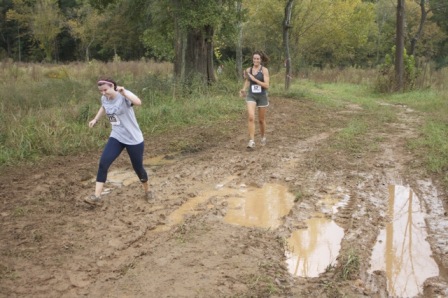 terrain. You never know what the weather will be like on race day so it is best to have experience in running in all types of weather. Running in the rain is the best, try it.
terrain. You never know what the weather will be like on race day so it is best to have experience in running in all types of weather. Running in the rain is the best, try it.
Gear: I’m not a huge gear guy, I like to be free on my trail run, but there are three very important pieces of gear: trail running shoes, a GPS watch, and a hydration pack. Trail Running Shoes are very important. I have seen many runners run in road running shoes on trails, but I wouldn’t recommend it. Trail Running requires a bit more support, protection, and traction than road running. You will enjoy trail running much more if you are in trail running shoes. A GPS watch is great too because it can give you the exact distance of your trail run. Also, if you get lost it can help you get found. Lastly, the hydration pack or any other water holder is a must. When trail running you are far from civilization where dehydration is a concern. Always be prepared with some water.
Now you’re ready to hit the trails! If you have any other questions about trail running use the search box on the top right of the page. Ask it a question, it has answers.
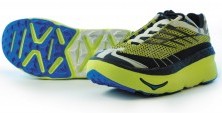 The Hoka One One Trail Running Shoes movement may be moving down the trail next. From minimalist trail running shoes comes the complete opposite, the Hoka One One. The Hoka One One was invented by Nicolas Mermoud and Jean Luc Diard of France, who had previously worked at Salomon. From an adventure race in Sicily was born a love for running over mountains and on trails. Nicolas and Jean wanted a trail running shoe that they could fly downhills even if they were heel striking (opposite of minimalist again). They came up with the Hoka One One Trail Running Shoes.
The Hoka One One Trail Running Shoes movement may be moving down the trail next. From minimalist trail running shoes comes the complete opposite, the Hoka One One. The Hoka One One was invented by Nicolas Mermoud and Jean Luc Diard of France, who had previously worked at Salomon. From an adventure race in Sicily was born a love for running over mountains and on trails. Nicolas and Jean wanted a trail running shoe that they could fly downhills even if they were heel striking (opposite of minimalist again). They came up with the Hoka One One Trail Running Shoes.

